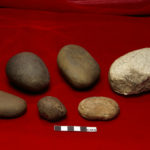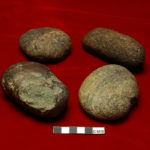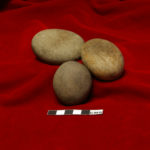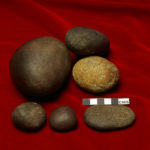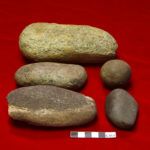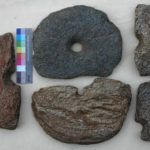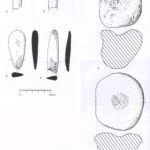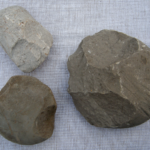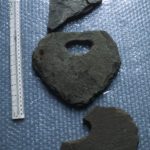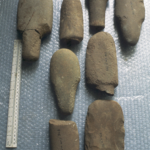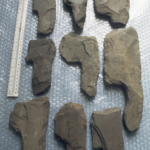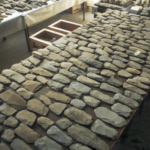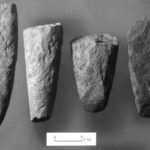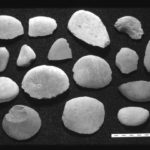Careful recording of the finds from excavations at Mound 1, Bornais, S Uist has given some indication of how the stone tools were used and stored during the occupation of this Iron Age roundhouse. Many of the stone tools were clearly deposited in groups; three discrete groups formed tight concentrations of 50cm to 60cm in diameter and were found against the surviving structures and the other groupings were more spread suggesting that they had been subject to post-depositional disturbance.
Particular combinations of tool types such as pounder/grinders – faceted cobbles (groups A and B) and smoothers – polishers (group C) were a feature of some groups whilst others were exclusively of pounder/ grinders (group E), faceted cobbles (group F) or strike-a-lights (Group D).
The clustering of the tools indicates that they were stored: perhaps they were originally hung in bags from the rafters and lay where they fell after the roof had burnt down; alternatively they could have been stored in bags or baskets set on the floor and tucked against the house wall.
For more information about excavations at Bornais go to www.cf.ac.uk/hisar/archaeology/reports/hebrides99 and Niall Sharples, 2012 A Late Iron Age Farmstead in the Outer Hebrides. Excavations at Mound 1, Bornais, South Uist. Oxford.

